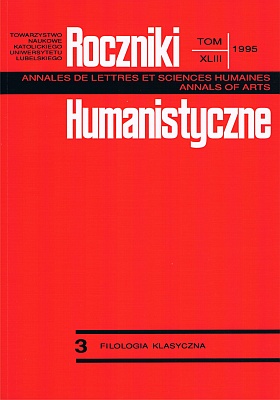An Analysis of the Homeric Structure of Recognition in A. Mickiewicz's Poems (Grażyna and Konrad Wallenrod)
Abstract
The paper demonstrates how Mickiewicz applied the Homeric structures of recognition (anagnorismós) in Grażyna and Konrad Wallenrod. This structural device occurred in antic literature extremely often, yet Homer was the first poet to have used this structure (in Odyssey). This was also the dramatic core of later Greek tragedy. Aristotle worked out a theoretical study of this question in Poetics, quoting recognition as one of the most essential characteristics which shape the plot of a work.
The analysis of recognition follows along the lines of the development of action, which allows to gradually unveil the author's assumptions. The poet's manner of writing is very reserved and at the same time functional while he puts forward recognitive hints to the reader and co-heroes of the poems and makes consequently for the end, that the solution of a puzzle.
One should notice that Mickiewicz's conception, though it be based on the identical device of Homer, has been carried out in a different way. Inasmuch as self-revelation of Odysseus initiates a series of recognitions, in Grażyna and Konrad Wallenrod a full recognition takes place at the end of the work, which creates a great tension of action and causes greater surprise.
Copyright (c) 1995 Roczniki Humanistyczne

This work is licensed under a Creative Commons Attribution-NonCommercial-NoDerivatives 4.0 International License.





